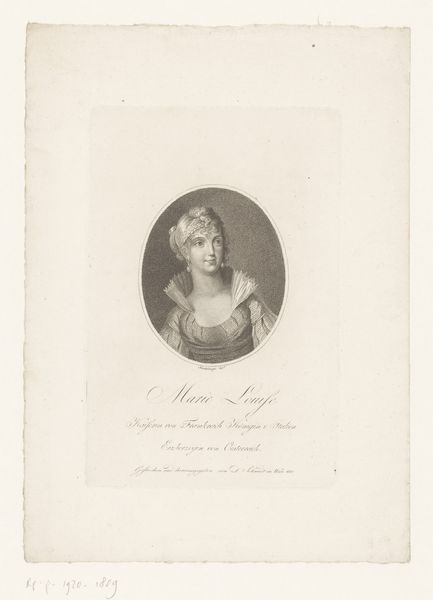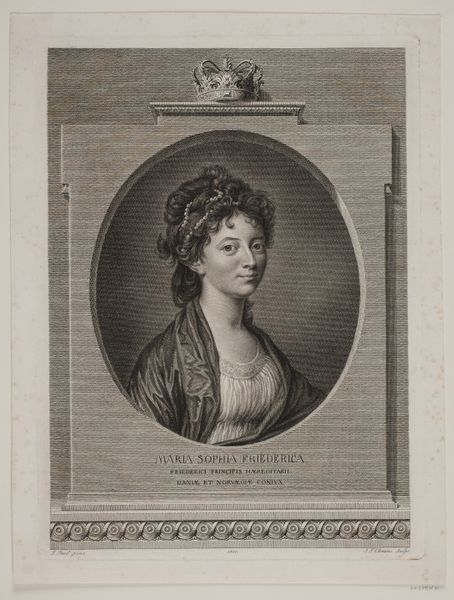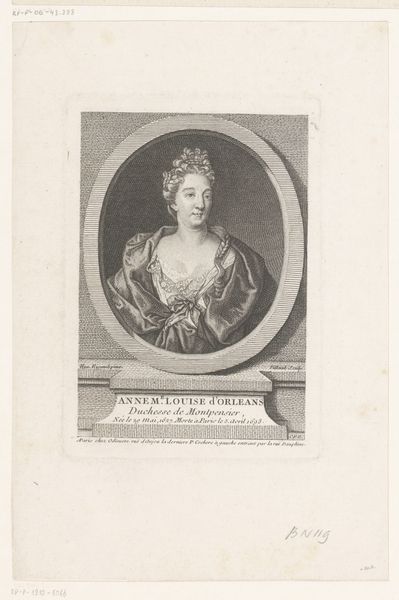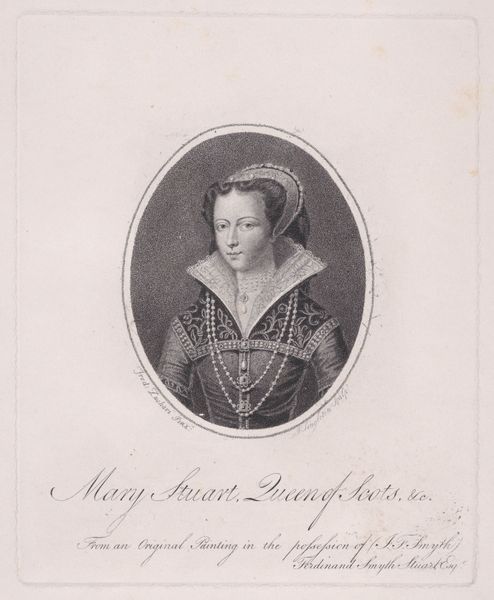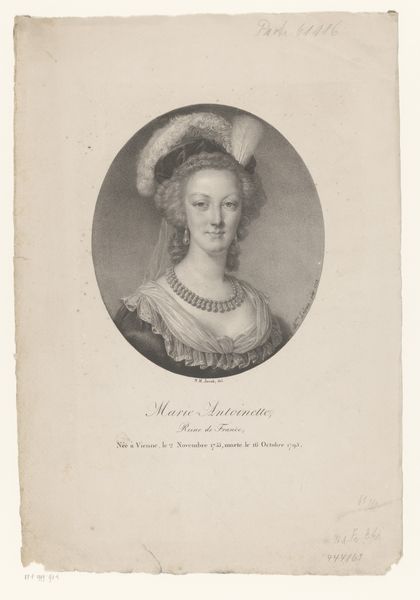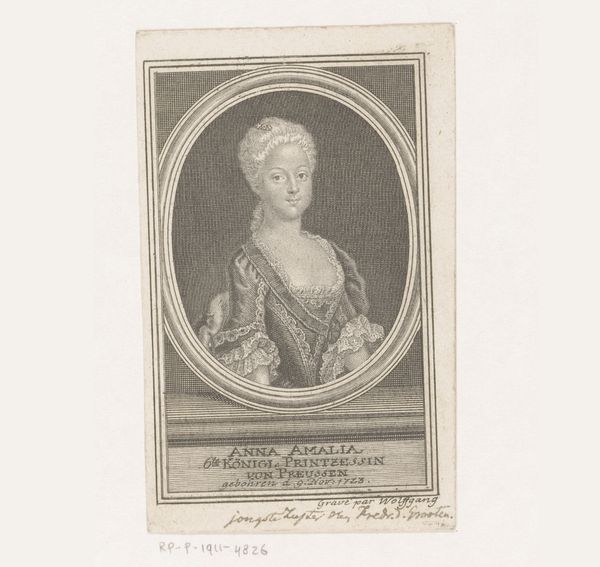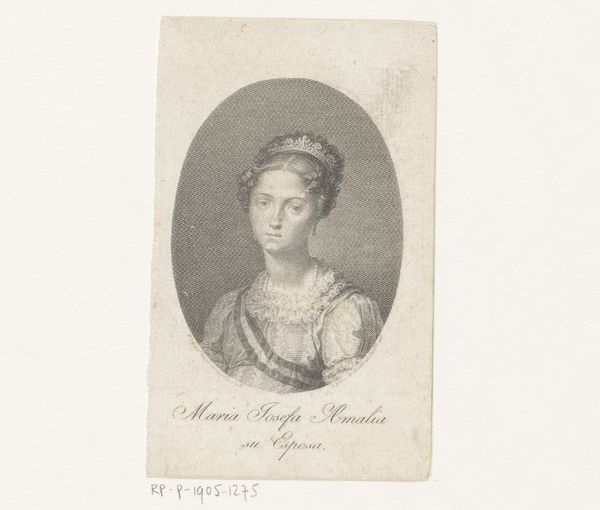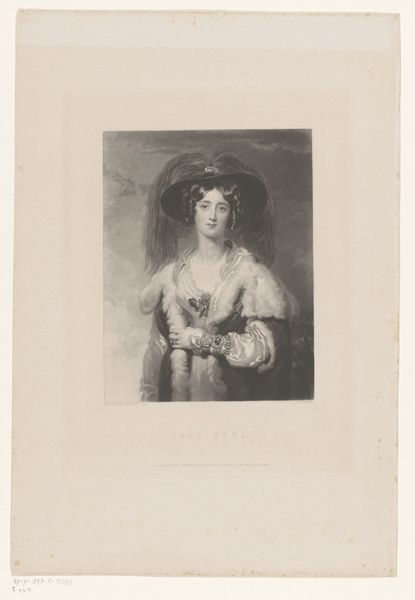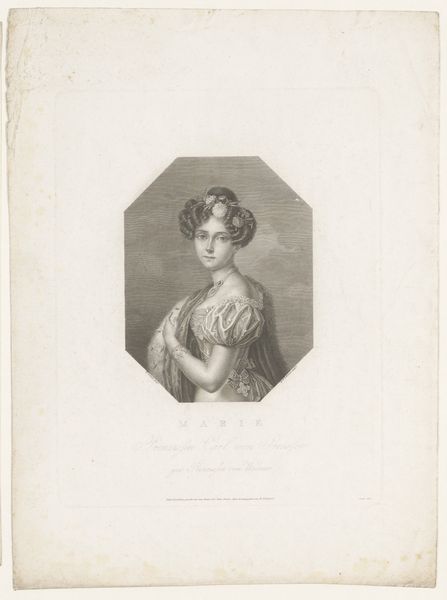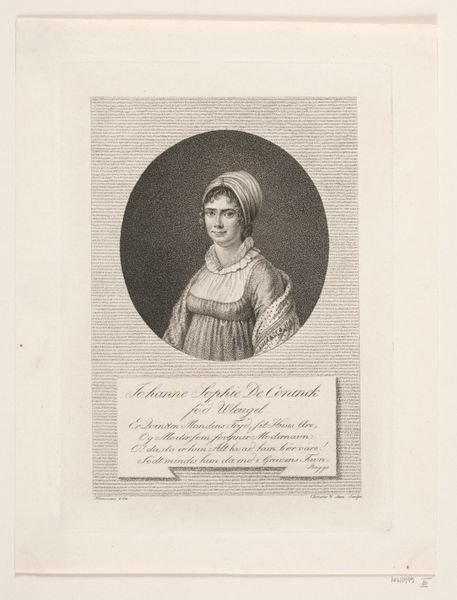
engraving
#
portrait
#
pencil drawn
#
neoclacissism
#
pencil sketch
#
old engraving style
#
pencil drawing
#
history-painting
#
engraving
Dimensions: height 302 mm, width 220 mm
Copyright: Rijks Museum: Open Domain
Editor: Here we have a portrait of Maria Ludovika Beatrix von Österreich-Este, made in 1808. It's an engraving. What strikes me most is how this old engraving style gives a strong sense of history. What symbols or meanings jump out at you? Curator: Well, first consider the oval frame. It's a visual device that immediately evokes classical antiquity. What emotional associations do you connect with that form? Editor: It feels very formal, a bit constrained. Curator: Precisely! Now, look at the pearls in her hair. Pearls, throughout history, have symbolized purity, but also tears. Here, do you see them hinting at the weight of her royal status? Editor: That's interesting. I hadn't considered the pearls as carrying a double meaning. Curator: And note her gaze, direct and seemingly unwavering. Consider, then, how portraiture of powerful women serves a dual purpose. What stories do you imagine are being told about her and to her audience through such features? Editor: I guess the direct gaze projects authority, but the pearls soften the image, suggesting both power and vulnerability. Curator: Indeed. The symbols chosen construct an identity and negotiate the complexities of power and expectation. Thinking about it this way, how might one begin to decode images more consciously? Editor: I see that analyzing the symbols, materials, and the overall context can unlock hidden cultural narratives in a portrait. Thank you for sharing your expertise on symbolism! Curator: My pleasure. Remembering that every artistic choice holds meaning transforms how we experience images from the past.
Comments
No comments
Be the first to comment and join the conversation on the ultimate creative platform.
